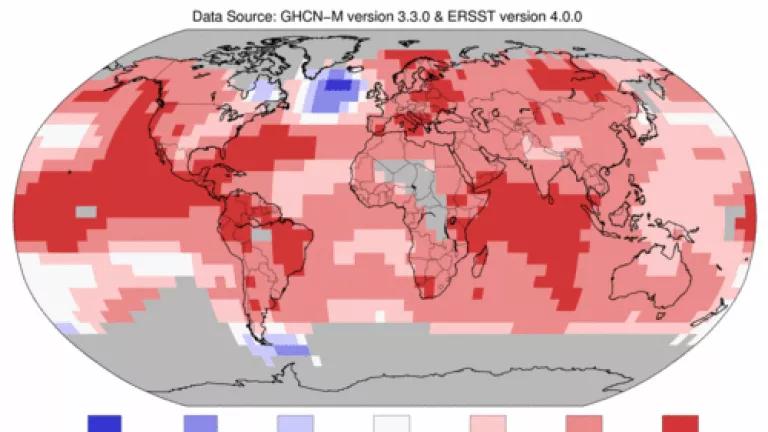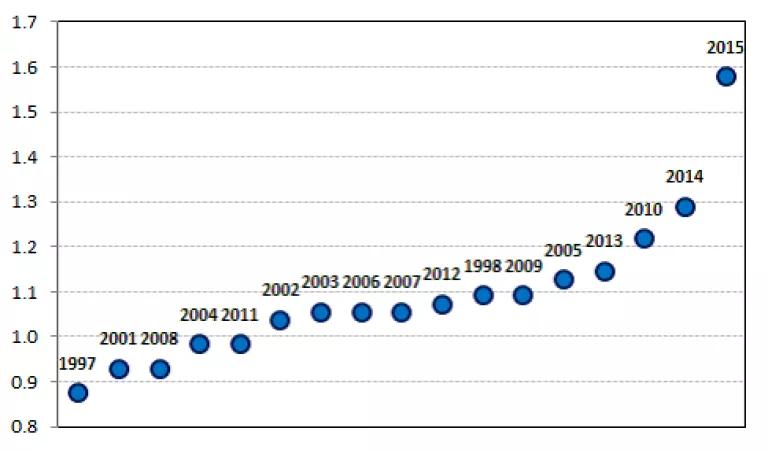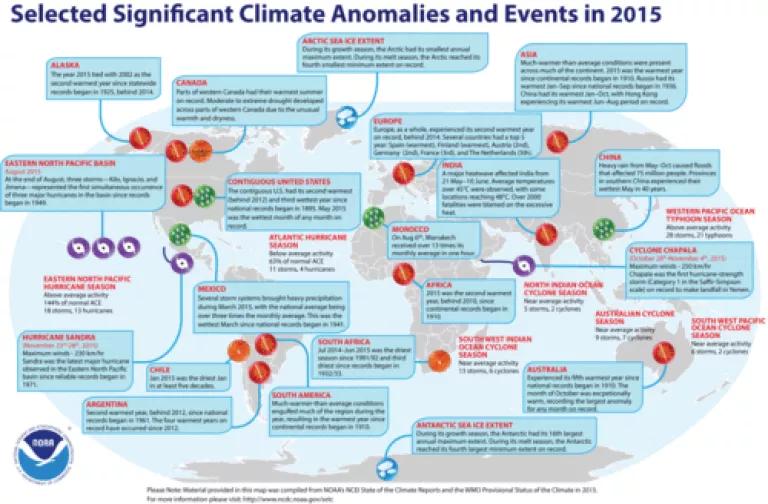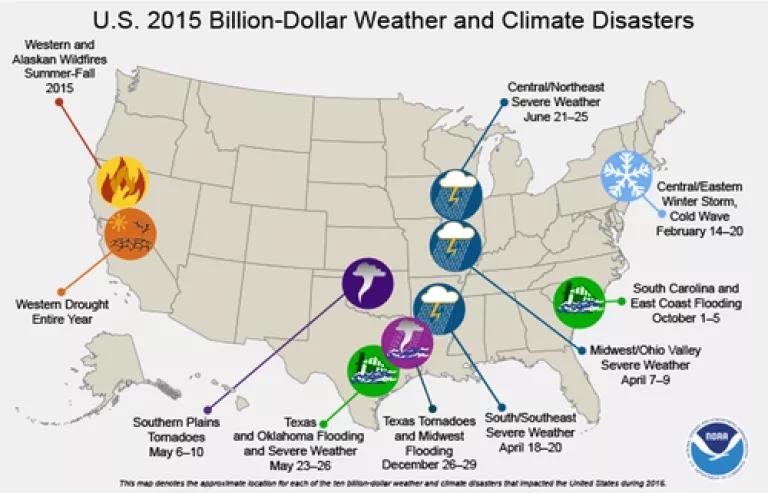
NASA and the National Oceanic and Atmospheric Administration (NOAA) just announced today that 2015 is the new global temperature record for hottest year since record keeping began in 1880. Both NASA and NOAA separately analyzed the global temperature data and came to this same conclusion.
Record warmth was broadly spread around the world, from Central America and the northern half of South America to parts of northern, southern, and eastern Europe and western Asia as well as large parts of the northeastern and equatorial Pacific and a large swath of the western North Atlantic and the Arctic Ocean.
2015 beat out 2014 (the second warmest year on record) by a surprisingly large margin -- 0.23 (NASA) or 0.29 (NOAA) degrees Fahrenheit (°F). This is the largest margin by which the annual global temperature record has been broken. The jump last year is on the order of 2-3 times the usual increase of around 0.1 °F seen between record temperatures The pace of warming may well be accelerating.

Figure: Top record global temperature years since record keeping began in 1880 showing the annual temperature departures in °F ranked coolest to warmest from a common 1951-80 base period. (NOAA)
Some of the conclusions from today's announcement include:
- 2015 was 1.62°F (0.90°C) warmer than the 20th century average.
- In the U.S. 2015 was the second warmest year on record.
- Ten of 2015's monthly global temperatures tied or broke existing records. In particular, December 2015 blew away all previous December temperature records and was 2 °F (1.11°C) above the 20th century average.

This human-induced warming has been putting our weather on steroids, with numerous unusual and extreme weather events recorded last year having significant cost impacts. The National Centers for Environmental Information (NCEI) tracks and evaluates climate events in the U.S. and globally that have significant economic impacts. According to the NCEI since 1980 the U.S. has sustained 188 weather and climate disasters where overall damages/costs reached or exceeded $1 billion and the total cost of these 188 events exceeds $1 trillion. While the 1980-2015 annual average is 5.2 events the annual average for the last 5 years is 10.8 events.

Figure: "In 2105, there were 10 weather and climate disaster events with losses exceeding $1 billion each across the United States. These events included a drought event, 2 flooding events, 5 severe storm events, a wildfire event, and a winter storm event." (NCEI)
2015 it is also the year the world really woke up to the reality of climate change and the need for concrete action to curb the dangerous carbon pollution forcing it, as is summarized in David Doniger's year-end blog, Turning Point: A Year of Action in the Fight Against Climate Change.
We are now about half way to the 2°C upper limit on global temperature increases above preindustrial times that the world's top scientists and governments say we must stay below to avoid catastrophic climate impacts. We're even closer to exceeding the 1.5 degree limit countries agreed to strive to meet in the Paris Agreement. Action now is critical!
